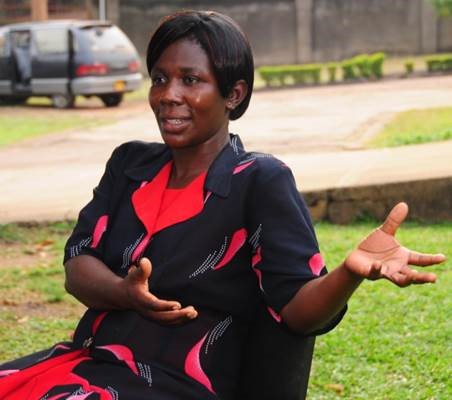Biferamunda Mwajuma, the only midwife at the Mukathi Health Center III, Kasese district, works seven days a week delivering up to 12 babies per month. “When I am off duty, the nurses have to refer mothers to other health facilities, especially if they anticipate complications,” she says.
One of Mwajuma’s most challenging experiences was when she helped deliver a baby and noticed meconium (the earliest stool of an infant), which is normally retained until after birth.
“The baby was showing signs of respiratory distress, and I had to aspirate the meconium from its nose and mouth.” But because of the lack of equipment, Mwajuma had to use her own handkerchief to separate her mouth from the baby’s mouth and manually aspirate the baby. “At that time I was like a traditional birth attendant, who lacks the necessary equipment to help a mother safely deliver her baby,” she says.
In 2015 Save the Children invited Mwajuma to midwifery training. Before the training, she said, she would help deliver a baby, clamp and cut the cord, and hand the baby over to the mother. “However, after the training I learned the importance of ensuring that the baby is breathing well before undertaking any other task.” Trainees were also provided with delivery kits, resuscitation equipment, suction bulbs, and penguin suckers. With the new equipment, Mwajuma does not have to use her handkerchief to cover her own mouth as she resuscitates babies.
Mwajuma’s new skills were put to the test in 2015. A mother in the second stage of labor came to the health center. When Mwajuma noted that the fetal heartbeat was weak, she considered referring the mother to the hospital, but there was no available transport. As the baby’s heartbeat grew weaker, she made the decision to assist the mother to deliver. But “when she was finally ready to give birth, the lights went out,” Mwajuma says.
Mwajuma shouted for somebody to shine a flashlight so she could see what she was doing. “I quickly cut the baby’s cord and carried it to the resuscitation corner for cleaning. Then I noticed that the fluids had meconium…and I also noted that the baby was not crying. I had to work very fast, trying to stimulate the baby while drying it at the same time. However, it was not responding, so I quickly took it to the ventilation area to clear its airway. I believe I did the drying, stimulation, and resuscitation in the first minute. I finally managed to clear the airway, and the baby let out its first cry. It was the first baby I delivered after Save the Children’s training and I was thankful that the training had come at the right time.”
While the health center is now better equipped and Mwajuma is better trained, the biggest challenge of all remains: that she is still the only midwife.
